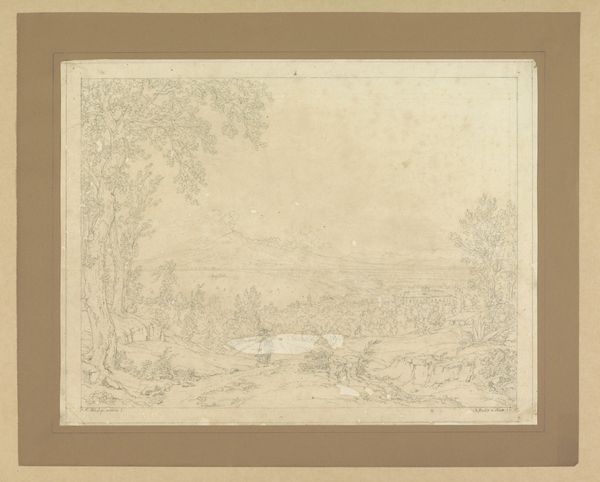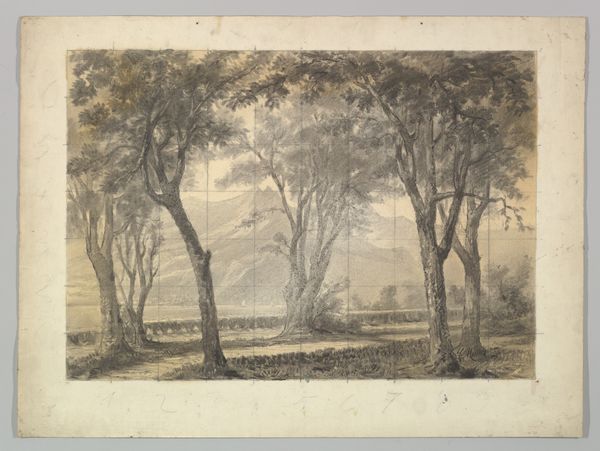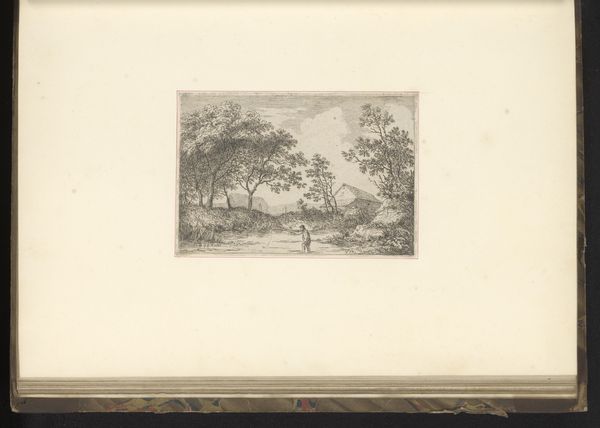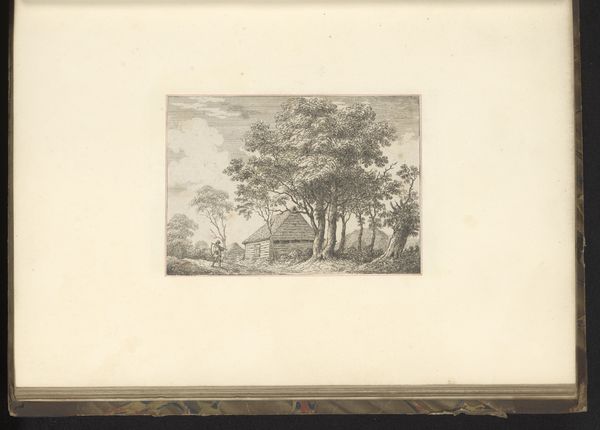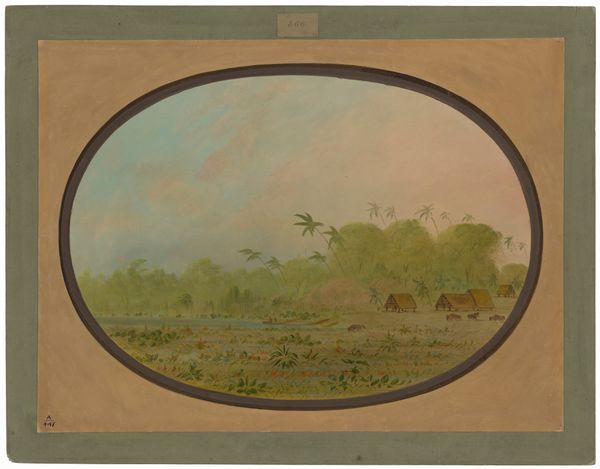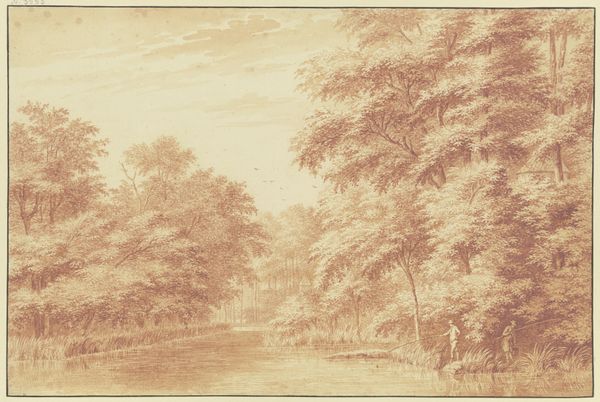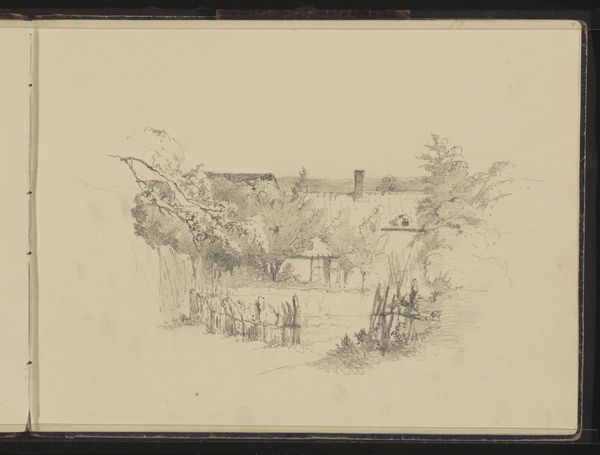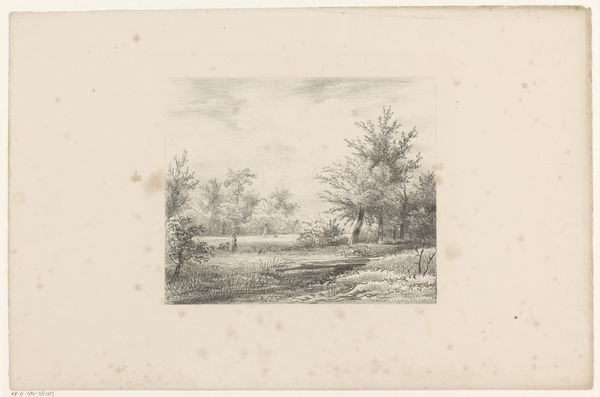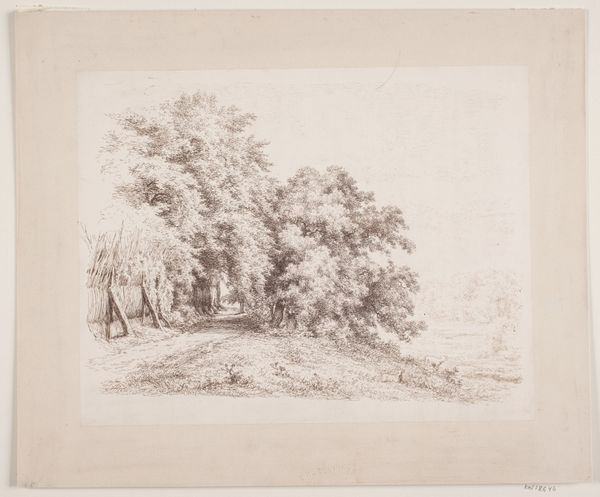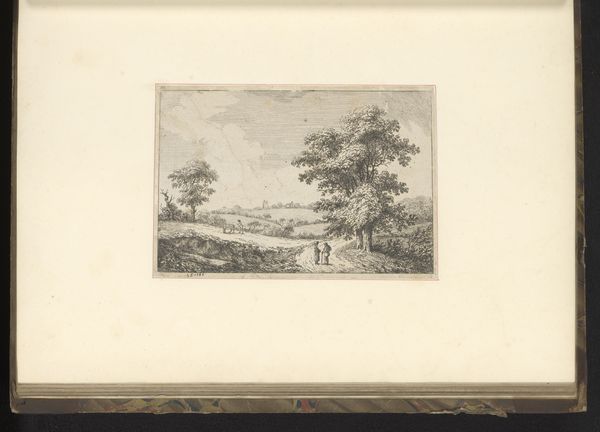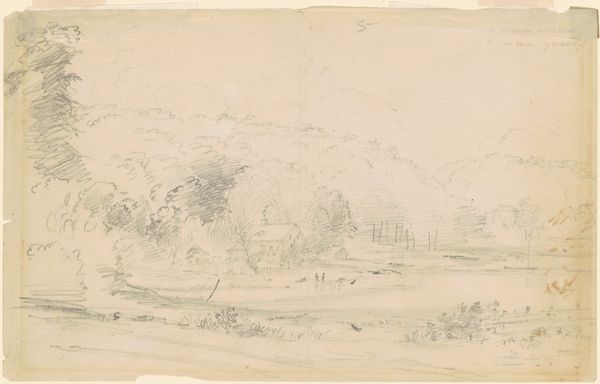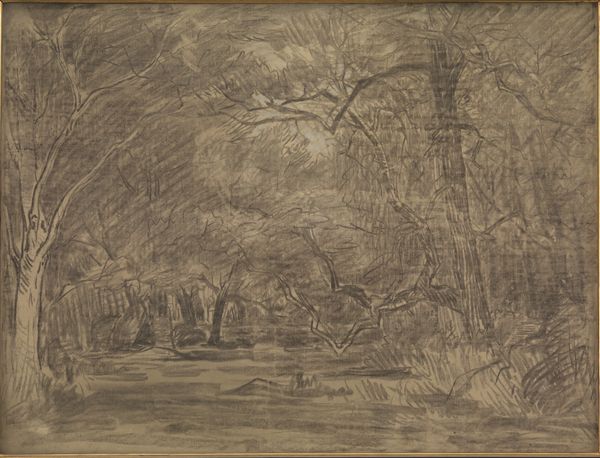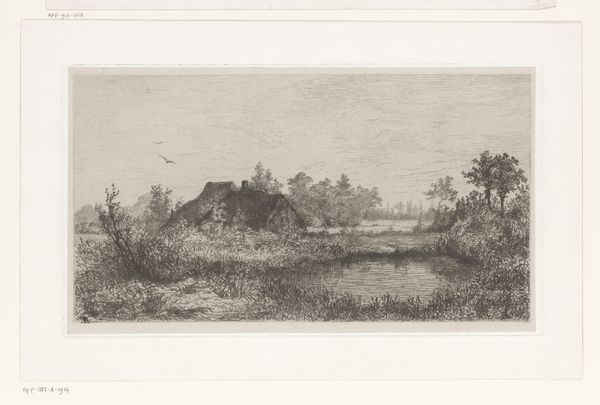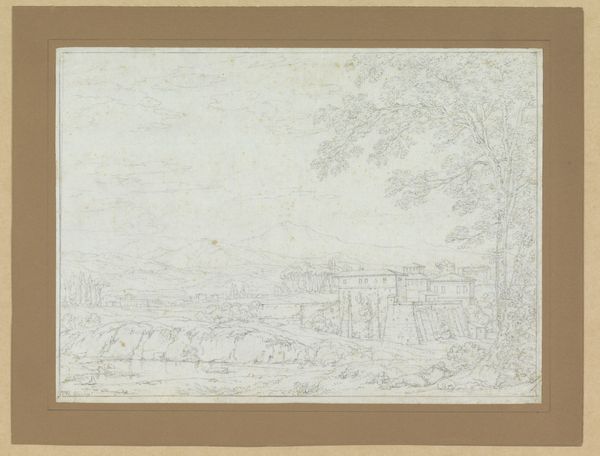
painting
#
water colours
#
painting
#
landscape
#
genre-painting
#
watercolor
Dimensions: overall: 46 x 59.8 cm (18 1/8 x 23 9/16 in.)
Copyright: National Gallery of Art: CC0 1.0
Curator: Let's spend a few moments with George Catlin's watercolor painting, "A Connibo Village," created sometime between 1854 and 1869. Editor: It's dreamy, almost ethereally green. Like looking through a humid, emerald veil. The perspective feels both inviting and…distant, somehow. What do you make of that pale turquoise sky peeking through? Curator: That tension is interesting. Catlin, who made a name documenting Native American life, presents the village through this gauzy filter. It reinforces a certain exoticism, even a romanticization. We have to remember, these images served a specific purpose for a Euro-American audience hungry for the "vanishing" West. Editor: Vanishing…there's a lot to unpack in that single word. The village itself feels a bit like a mirage – those huts nestled amongst the lushness, are they thriving or simply surviving? Is it idyllic, or something more complex? The hanging vines feel a little like shrouds, and with the stark tree trunks it's giving me a touch of fairytale haunted forest vibe. Curator: It's crucial to consider the context. Catlin often portrayed Indigenous peoples within a framework of inevitable decline, influenced by prevalent 19th-century social theories. So, the aesthetic choices—the hazy atmosphere, the way the village is partially obscured—contribute to that narrative of a culture on the brink. The light, so present on those verdant, thick leaved trees, fades softly into a sky that provides zero clarity to the image as a whole. Editor: I see what you mean. It’s beautiful, but laden with historical baggage. Like, you could easily miss the human element, which maybe, that’s the entire point? So the village, then, functions less as a place, and more as an idea—a symbol. I'm seeing so much here that makes me pause, especially considering what the impact of such visual portrayals did to these tribes as perceived in society. Curator: Precisely. Catlin's work, while visually compelling, participated in shaping perceptions of Native Americans. Understanding that legacy is essential when engaging with this piece. It speaks to our ongoing work today. Editor: Absolutely. Looking at this painting isn't just about aesthetics; it's about confronting the layers of history, ideology, and representation embedded within. It leaves you with more questions than answers, really. Curator: Yes, and perhaps that's its power, forcing us to grapple with the complexities of the past. Editor: Here's to always striving to deepen that understanding, one artwork at a time.
Comments
No comments
Be the first to comment and join the conversation on the ultimate creative platform.
